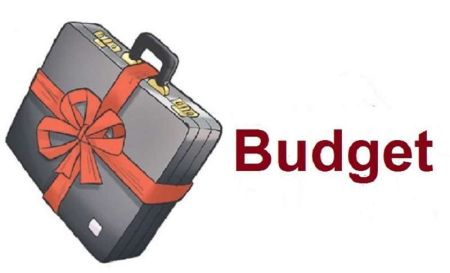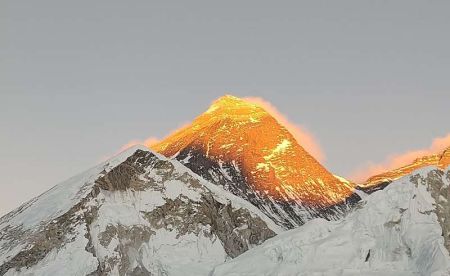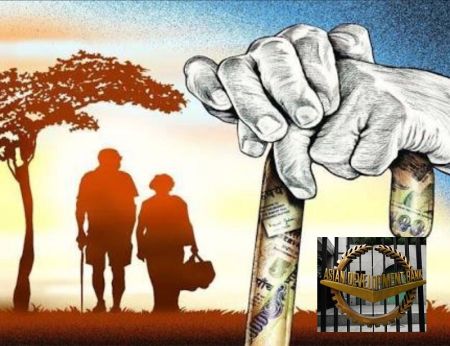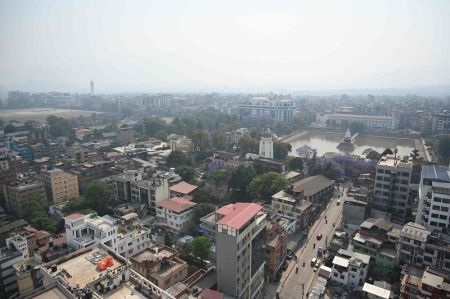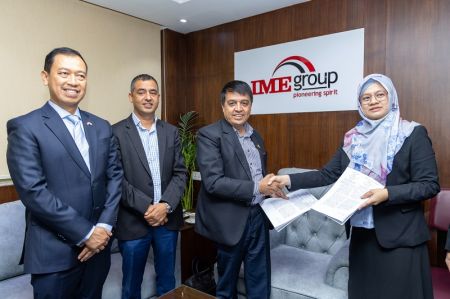.jpg)
Sunil Kausal was appointed the Chairman of Standard Chartered Bank Nepal Limited (SCBNL) in 2012.
He is also the Regional Chief Executive of the Standard Chartered Bank India and South Asia. He has held several senior positions with the bank across different markets including Global Head- SME Banking and New Ventures in Singapore. Kaushal, who has over 23 years of banking experience, has also worked for Bank of America and HDFC Bank. He was in Kathmandu on the occasion of the Annual General Meeting of SCBNL last month. In an Interview with New Business Age, Kausal he shared Standard Chartered Bank’s current position and future plans in Nepal. Excerpts:
How does it feel to be honored with the title of Bank of the Year-2012 in Nepal?
It’s a great honor to be recognized as the ‘Bank of the Year 2012’ in Nepal. The prestigious accolade we have got has further boosted our efforts to strive for the best. I believe all the credit goes to the management team working here in Nepal. They have managed capably, albeit, in a difficult situation. We are proud of the fact that we have managed the business very well.
How satisfied are you with the performance of Standard Chartered Nepal in the last fiscal year?
As I said , we are very glad with our performance, given the tough market situation. So our approach as a bank, not only in Nepal but also globally, is to focus on the basics of banking. The basic factors of good banking - good capital, good liquidity and tight risk management have delivered us a good set of results. Clearly, one would have wanted more growth, but the market conditions are such that you have to be conservative. To be precise, the economy is not growing rapidly and banks are reflection of the economy. Given the present circumstances, the bank has performed very well.
The bank’s profit increased only marginally to Rs 11.7 million in fiscal year 2011/12 from Rs 11.2 million in the previous year. What do you think went wrong?
I don’t think anything went wrong. We have rather set and are following a very conservative business model. Clearly, the growth is not as I had expected. Along with growth comes the quality of earning which is extremely good. So, as I have already mentioned, our capital and liquidity ratio are very good. Similarly, if you look at the risk parameters, Non- Performing Assets (NPAs) and coverage ratio; they are extremely strong. We further believe that we’re very well positioned in this market. As the economy revives, we will do much better.
StanChart seems to have quite a big investible fund at hand as also indicated by its high Capital to Risk (Weighted) Assets Ratio Adequacy Ratio (CRAR) which is 14 per cent and low credit-deposit (CD) ratio which is 62 per cent as per the bank’s latest quarterly report. Still, the bank looks hesitant to invest. Why?
I don’t think it is hesitation. In fact, we see this as our strength. As you said, StanChart’s CRAR and CD ratios are strong even at a time when the economy is not doing that well. It means you have the ability to grow strongly when the economy bounces back. Our model is such and we’re comfortable with it. The model is about being conservative and having good quality of earning. In addition, we also help a number of Nepali institutions to do business overseas. So, we’re hopeful about a very strong growth in the future.
What are the plans for the current fiscal year and beyond?
I think we will continue to be in a pretty challenging environment in the current fiscal year as well. Given the current political and economic situations, we don’t see the possibility of any huge increase in our investment. The market situation is very likely to remain tough. But we’ve have a balanced business. We are doing well in consumer as well as wholesale banking. On the consumer side, there is a good momentum. On the wholesale side, there is a good pipeline. The corporate houses are slightly hesitant to invest. When there is more clarity, particularly on the political front, I think you will see corporate investments come through and banks like us benefit.

What about the plans to expand the bank’s coverage and launch new products?
I think we have a good coverage with our 90 branches, two extension centers and an ATM network. We’re also investing in our front line sales, bringing new products, getting into the SME segment, working with multilateral agencies in terms of supporting some of the project finance transactions. So, there is a lot happening and as a leading international bank and being the only genuine global bank operating in Nepal, we’re able to bring the best practices and latest products into this market.
Would you please say something about SME banking which is regarded as one of the strengths of StanChart? Are there any policy changes?
The SME business is in an early stage. But again, our experience in a different market helps us to get into that segment here. So, we started off building products and offering them for example, loan against property which we call LAP, installment loans, some trade working capital etc. So, we’re getting into it. The SME segment here will benefit from all the best practices and expertise we have.
What are the changed strategic trusts of the Standard Chartered Group in the world, particularly in this region, for the coming days in view of the changed global perspectives?
I don’t think we’re looking at any dramatic changes in the strategy. Our strategy has been very consistent and has delivered very strong results. We had nine years of record growth and profits, even during the crisis period. We were probably the only bank which a record profit. It’s been a huge reinforcement of the strategy we’re following. We just announced our pre-closing training statement. Again we are looking at a very good growth both in terms of the overall income and in the operating profit. So, there is no change in strategy. I think we have to continue doing what we have done so far. We have to continue focusing on the basics of banking — capital, liquidity and risk management which is extremely important. We have the franchise, customers and a good network. I am quite hopeful of better growth in the US, China, India and European nations this year. It seems 2013 would be a much more better year than 2012.
You might have gone through the recent directive of NRB (Nepal Rastra Bank) about the base rate system for interest rates. What improvement would you like to suggest in the directive?
I think the base rate is something followed in many markets including India. It’s is up to the banks to come up with their own calculation of base rate. What is required is the transparency of pricing. You have the base rate and margin; the customer knows what the margin is. The calculation of base rate is something that individual banks will have to submit to the central bank as a proof. There it is a process of discussion and understanding about why they are using certain parameters to arrive at their base rate. And, it also differs from bank to bank. It cannot be uniform for all banks.
You have been closely watching the fluctuations in the foreign exchange market. So what do you foresee for the exchange rate between US dollar and Indian Rupee?
A lot depends on the investors’ sentiments in India. If you look at India, it has a structural deficit on the current account. There is also trade deficit. The deficit has to be made up by either FII (Foreign Institutional Investment) flows or FDI flows. Interestingly, the FII flow was very strong in 2012. India received over USD 21 billion in FII in the first eleven and half months or so. But what is going to be most important is FDI coming through and that in turn will depend on the corporate sector’s sentiments to invest in the Indian market. There has been a fair bit of skepticism because of the slowdown in the reform process and delay in some policy level decisions and approvals. If the FII flows continues and FDI flows comes in then it could be a year where the Rupee could be quite stable. We should also watch out the oil import, a major factor in India. We have three big components of import — oil, gold and palm oil. These three goods have big brand values. Exports should also take a pace. We lagged behind in exports because the external markets in Europe and the US were not very strong.
Looking at the QN report for the current fiscal year, it is interesting to know that StanChart Nepal made exactly the same amount of profit as in the previous year while the capital base and reservation also increased. What are we to understand from this?
I think our capital base increased because of the previous year’s profit. The bonus issue has been there and obviously the strategic results are kept back. I will again come to the same point. There is not a great deal of corporate activities happening currently in Nepal and the wholesale business, too, is not growing rapidly. We’re seeing a good momentum and I think there is also base year effect as the last year’s first quarter saw a good double-digit growth. So this year the base of last year is quite high. We’re positive, going forward and we have to remember that our model is to be conservative. And we give good quality earning and sustainable returns to our shareholders. So that’s important as we don’t want a growth just for the sake of growth.
SC was expected to be a big investor in Nepal, particularly for infrastructure projects. Your predecessors and you too had shown such a possibility in our previous talks. But that hasn’t happened so far. Why?
As regards to investing in infrastructure, I think discussions are underway with various multi-lateral institutions and there are also other transactions in the pipeline. At the end of the day, we as a bank can only show the opportunities. The investment has to be made by the cooperate investors. We can’t force the investors. The good news is there is a pipeline for transactions. It is also a matter of time.

Is there any possibility of StanChart Nepal acquiring another bank or accepting a merger proposal from yet another, given the merger spree in recent times?
Our growth is organic. So we focus more on the existing business in an organic way. If something interesting comes up, we will definitely look into it.
The world is still grappling with the aftermath of the global financial crisis. What are the changes you find in the regulatory landscape?
The regulatory landscape has changed quite romantically. We see that in higher capital, liquidity requirements. Clearly, the compliance standard has gone up and the cost of compliance, too, has gone up. I think the objective of making banking a safer business is commendable. We only hope that all regulators are consistent in their approach. Otherwise, for international banks like us, different regulators behave in different ways and it becomes fairly difficult. So we are all for stronger banking and banks. But at the same time, we hope that it is more consistent in terms of regulatory approach across the market.
What changes you have made in SC’s business in your tenure of around one year?
We have to remember that excellent franchise doing very well across the region with a very strong brand is very important. So there is nothing one has to change. But clearly the focus is on efficiency in terms of productivity, the best returns from capital investments, and strategically, how we grow also matters. There is no uniform answer across the market, as we have got a large market like India. For me, it is about focusing on the basics of banking. We’re not a bank trying to grow all of a sudden; it’s a glorious journey of more than 25 years in Nepal.






